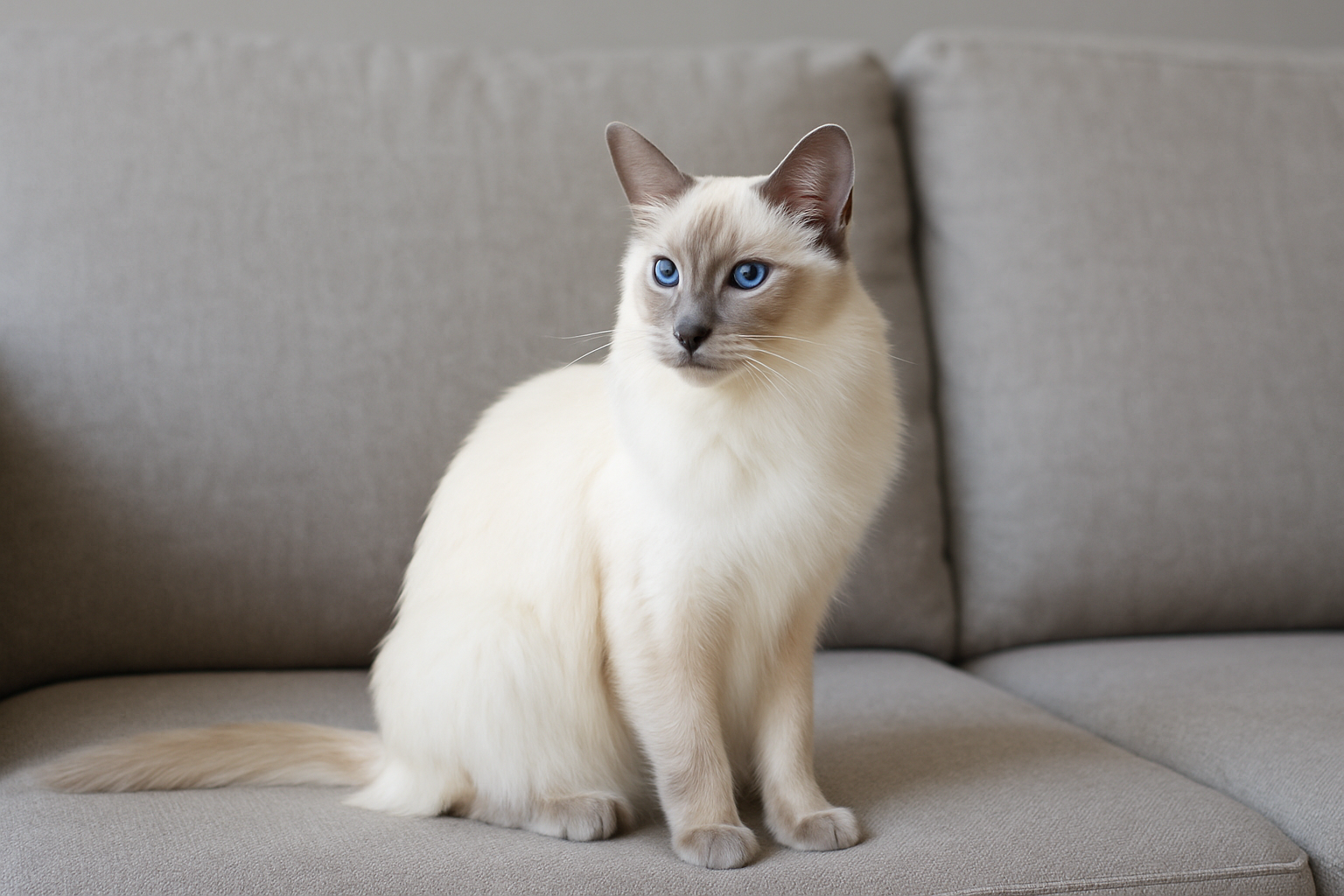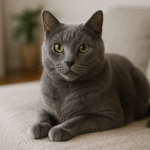If you’ve ever dreamed of a cat that looks like a ballerina but purrs like a best friend, the Balinese cat may be your perfect match. Known for their stunning silky coats, deep blue eyes, and expressive personalities, Balinese cats are often described as a long-haired version of the Siamese—but with an extra dash of grace and affection.
Let’s explore the Balinese cat characteristics, care needs, and why this breed has quietly become one of the most beloved among cat enthusiasts.
Quick Breed Facts
- Origin: United States (from Siamese lines)
- Breed registries: CFA, TICA, GCCF
- Weight range: 6–11 pounds
- Lifespan: 12–20 years
- Coat: Fine, silky, medium-length
- Colors and patterns: Pointed (seal, blue, chocolate, lilac, and more)
- Eye color: Deep sapphire blue
- Grooming: Low maintenance
- Activity level: High
- Affection level: Very high
- Vocality: High (they’ll tell you their opinions!)
- Good with children: Yes
- Good with other pets: Yes, if introduced properly
History & Origin
The Balinese breed traces its roots back to the 1940s and 1950s when long-haired kittens occasionally appeared in Siamese litters in the United States. Rather than dismissing them as “flukes,” breeders like Marion Dorsey and Helen Smith recognized their beauty and began selectively breeding for the longer, silky coat.
Despite their name, Balinese cats aren’t from Bali. The name was chosen because their graceful movements reminded breeders of Balinese dancers.
Over time, two types of Balinese lines emerged: the traditional (applehead) type, with a rounder face and sturdier build, and the modern (wedgehead) type, with a more angular face and slender body. Today, most registered Balinese cats come from the modern lineage.
Appearance: Long-Haired Siamese Beauty
Balinese cats are often mistaken for Siamese at first glance—until you see the coat. They have:
- A fine, single-layer silky coat that lies close to the body
- Striking blue almond-shaped eyes
- A long, plumed tail like a feathered ribbon
- A lithe, muscular body built for agility
They come in the same point colors as Siamese: seal, chocolate, blue, and lilac. Among the rarest and most beloved is the lilac point Balinese cat, with a delicate silvery coat and frosty gray points.

Personality: Outgoing, Affectionate, and Vocal
If you want a quiet lap cat, the Balinese might surprise you. These cats are talkative, curious, and deeply people-oriented. They tend to follow their humans around the house, offer commentary on everything, and even greet you at the door like a dog.
They’re known for:
- Being highly intelligent and easy to train
- Forming strong attachments to their people
- Playful and kitten-like behavior into adulthood
- Wanting to be involved in everything—yes, even laundry folding!
Activity & Play: Smart and Energetic Companions
Balinese cats have high energy levels and thrive on interaction. They’re clever problem solvers, and they enjoy games like fetch, puzzle toys, and even clicker training.
If you leave them alone for long periods, they may become bored or lonely. Consider another feline friend if you’re gone much of the day.
multi-level cat tree gives them space to climb, perch, and rule the room like royalty.
Health & Lifespan
Balinese cat lifespan ranges from 12 to 20 years, with many reaching their late teens in good health.
Some genetic concerns to be aware of:
- Crossed eyes (less common today)
- Progressive retinal atrophy (PRA)
- Amyloidosis (linked to their Siamese ancestry)
Regular vet visits and genetic testing from responsible breeders can reduce the risk of inherited issues.
Grooming & Care: Surprisingly Low Maintenance
Despite their longer coat, Balinese cats are low-shedding and require minimal grooming. Their silky fur doesn’t mat easily, so a quick weekly brushing usually does the trick.
Other care basics include:
- Regular dental hygiene
- Nail trims
- Litter box cleanliness (they’re picky!)
Dr. Elsey’s Ultra works well for Balinese cats.
Family Compatibility: A Great Choice for All Ages
Balinese cats make exceptional family pets. They’re gentle with kids, affectionate with seniors, and can even get along with cat-friendly dogs. Just be sure any playtime is respectful—this elegant cat doesn’t appreciate roughhousing.
They do best in homes where someone is around to keep them company and mentally stimulated.
Are Balinese Cats Hypoallergenic?
Balinese cats are often promoted as a hypoallergenic breed, and there’s truth to the claim. While no cat is completely allergen-free, Balinese cats produce lower levels of the Fel d 1 protein, which is the main trigger for cat allergies.
Many allergy sufferers find they tolerate Balinese cats much better than other breeds—but it’s best to spend time with one before adopting to see how your body reacts.
How Much Are Balinese Cats?
So, how much are Balinese cats? Prices typically range from $1,000 to $2,500 depending on:
- Pedigree and lineage
- Coat color (rare colors like lilac point can be more expensive)
- Breeder reputation
- Show quality vs pet quality
Rescue options may also be available for a lower cost, especially through Siamese or Oriental breed-specific rescues.
Recommended Supplies for Balinese Cats
- High-protein, grain-free food for lean muscle
- Interactive toys (laser pointers, puzzle feeders)
- Scratching posts and tall cat trees
- A cozy heated bed—they love warmth!
- Grooming mitt or fine-tooth comb
| Preview | Product | Price | |
|---|---|---|---|

|
K&H Pet Products Thermo-Kitty Bed Heated Cat Beds for Large Indoor Cats & Dogs, Calming Warming... | $46.99 | View on Amazon |
Final Thoughts
Balinese cats combine brains, beauty, and bold personality into one elegant package. Whether you fall for a playful kitten or a regal lilac point Balinese cat, you’re welcoming a companion that will bring energy and love into your life for years to come.
If you’re looking for a graceful cat with a social streak—and potentially less allergic reactions—the Balinese might just be your purrfect match.






